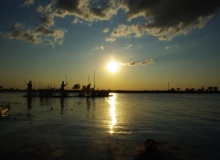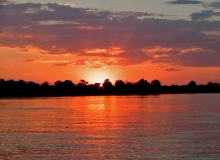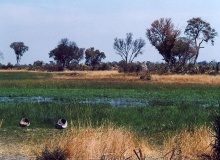Botswana
A country of wide-open spaces where the adventuresome spirit still survives
Botswana with lots of wide-open spaces and lots of wildlife too, is of the few remaining destinations in Africa where the adventuresome safari spirit still survives. Travellers on safari in Botswana get to see an arkful of animals in the wild: lazing in the waters of the Okavango Delta (Moremi Game Reserve), grazing on the grasslands of Chobe National Park and tracking the arid salt pans of the Kalahari Desert.
To protect Botswana's natural assets, government policy promotes low-volume, high-cost tourism. The country may have high travel fees, but Botswana travel rewards you with a plethora of colorful birds and large game including lions, brown hyenas and cheetahs, ostriches and zebras, antelope and leopards.
Accommodations can range from a tented riverbank campsite to a plush lodge.
Botswana can afford to discourage mass tourism because of its great mineral wealth. It is one of the world's largest producers of diamonds, and it has reserves of gold, copper and nickel.
More than 80% of Botswana's small population of 1.7 million lives in a scattering of towns and large villages, such as Francistown or the capital of Gabarone, leaving plenty of room for animals and travellers to roam the countryside unhindered.
Most recently Botswana has become more widely known through the delightful novels of the Scottish barrister, Alexander McCall-Smith. The stories tell of life, relationships, the dry, scrubbland country and in particular the adventures of a gentle-natured female detective. The first in this famous series of novels is titledThe No.1 Ladies’ Detective Agency.
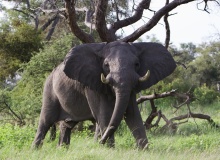

Gaborone
Gaborone, is a sprawling capital. The best attraction is the national museum that displays a wonderful collection of local handicrafts and traditional objects.
About 40 kms south of Gaborone is Mokolodi Nature Reserve, with animal species large and small. It promotes wildlife conservation and environmental education for the children of Botswana. Visitors can experience day and night game drives, animal tracking, horse riding, elephant walking, riding and bathing, bush barbecues and cheetah patting. Some of the scenes in the film The No. 1 Ladies' Detective Agency were shot there.
If you have more time, you could take a day trip to David Livingstone's house. Although this site is not on most tour agendas, it can be reached from Gaborone in an ordinary vehicle without four-wheel drive. Botswana was the only place in Africa where the missionary and explorer lived for any length of time. The stone foundations of Livingstone's home lie just west of the Kolobeng River, on the north side of the gravel road, between Thamaga and Kanye. In this dry, dusty spot, you can stand where Livingstone once did and look out on a small part of Africa that is almost identical to what he and his family experienced.
WHEN TO TRAVEL to Gaborone
Gaborone is hot and dry throughout the year. Rain falls in summer as sudden, heavy showers that quickly dry up. Summers can be blisteringly hot, and during winter it is chilly at night. The best time to travel to Gaborone is during spring or autumn (September/October or March/April/May).
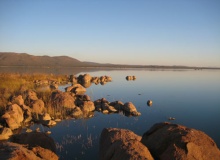
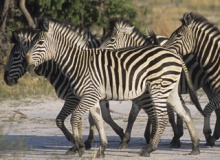
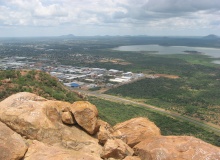
Maun
The small town of Maun, 575 kms northwest of Gabarone, is on the edge of the Okavango Delta. And it is one of the busiest centres in the country. Few visitors go beyond the souvenir stalls outside the airport gates before they board the five-seat connecting flights to Okavango Delta, Moremi Reserve or Kalahari Desert destinations.
These flights are a great introduction to what's to come—the pilot usually flies low enough so that you can pick out huge elephant herds or, occasionally, a large antelope dashing through the brush. For drivers and their vehicles, Maun is a place to rest. The town has curio, souvenir and art shops, some of them very good.
On the outskirts of town are Maun's only attractions, the Okavango Swamps Crocodile Farm and the small Maun Game Sanctuary, with walking trails through the last of the natural habitat that once surrounded the town. Bordered by the Thamalakane River, the sanctuary has quite a few animals and some good bird sightings.
WHEN TO TRAVEL to Maun
The best time to go is during the winter months from May to October when there is little or no rainfall and the days are warm and cloudless. Nights can be cold however. November to April can be very hot, with most of the rainfall between December and February.
